Images of Learning

Welcome to London! It is Sunday, September 22, 2013, and I am somewhere in a long hallway in the Heathrow airport, approaching the official UK Border. Which I find just a wee bit entertaining as technically, I am in the UK. I just haven’t been approved to enter the country yet, and I have not yet noticed the sign that tells me that no photographs are allowed. But I will see that sign and not take any more pictures, even though the best sign is yet to come. It is the sign that tells me as I approach customs that translation services are available for a variety of different languages, including “Plain English.” Plain English. I remember pondering that phrase, and concluding that it must refer to the American English that I speak, which is different than the English spoken by the British. Alas, I was wrong. Apparently “plain English” refers to using simple words and phrases, avoiding jargon.[1] And thus began my adventure of learning about new languages, new ideas, and new people.
This writing is a journey of reflection and visual data[2] regarding the London Advance for George Fox University’s Doctor of Ministry (DMin) in Leadership and Global Perspectives. I am a member of the fourth cohort to participate in this program. Most of our cohort members are scattered about the globe, though the majority live in the United States and seven of us live in the Portland, Oregon area. We had not met prior to our arrival in London, and we were joined a few days later by cohort three. After this face to face gathering, we returned home, but continued our learning through on-line chats, various readings, blogging, and our own independent studies. I invite you to join with me in this reflection. I will consider my exposure to new words and new people, to different concepts and ideas, and discuss how I have applied these in my life and work over the past three months since I returned to the United States.
Personal Interests: I arrived in London two days before the rest of my cohort was to arrive. I planned this to allow my body time to adjust, as being aware of my physical wellness is an essential part of my ability to participate fully in the learning experience. I was excited when I arrived because a friend of mine, Laura, had recently moved to Amsterdam and flew over to spend that first day with me. Neither of us had been to London before, but we had some tips from Laura’s well-traveled husband. So off we went – to Picadilly Square, Carnaby Street, Regent Street and SOHO. We traveled on the Underground, marveled at the buskers (street performers). We shopped, laughed, shared stories, and walked. We enjoyed a marvelous Indian meal at Mint Leaf, and then decided to walk back to the hotel. It was a perfect way to explore a new city and country: with a friend. Laura made a difference for me, not merely because of her friendship, but because her presence forced me to be out and exploring. Had I been alone I may well have stayed in my room and slept, having just traveled for eighteen hours, which would likely have triggered my chronic pain. Her encouragement and company lifted me up physically, emotionally and spiritually. She was the part of my lesson: that people matter in so many ways.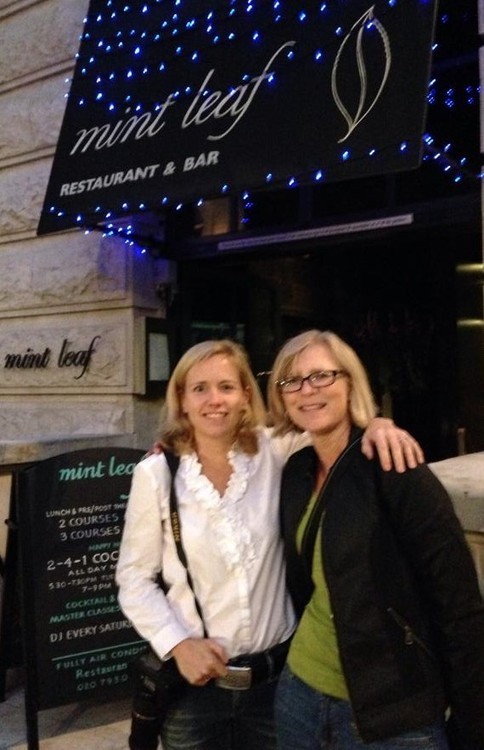
0
false
false
false
EN-US
X-NONE
X-NONE
Once the rest of the cohort arrived, the learning became a whirlwind of information. What stood out most to me, however, remained the people. Our cohort had “met” during three on-line chats prior to the Advance, but face to face is another story. I made friends, people whom I believe will be my friends for a very long time. We are studious and focused, curious and adventurous. While we have different ways of thinking, personalities, ministries and ideas, I learned (and continue to learn) to value each person. It is being with others on this journey that makes it worthwhile.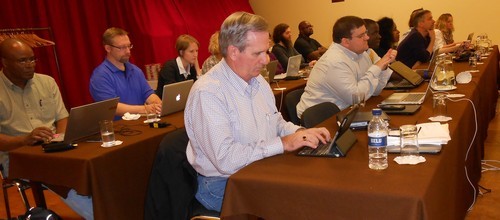
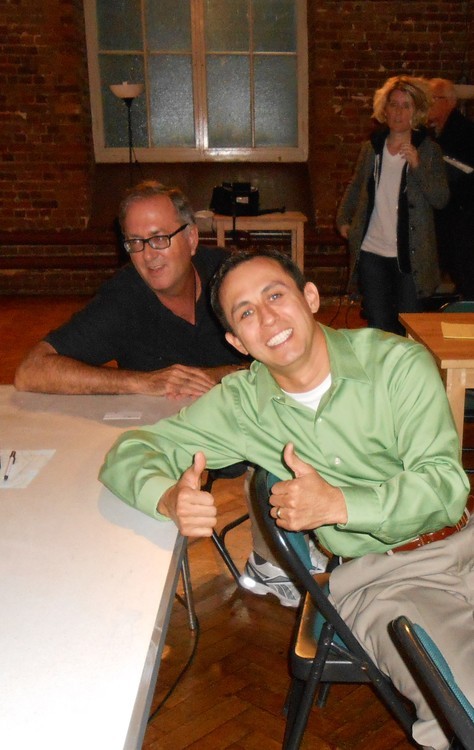
0
false
false
false
EN-US
X-NONE
X-NONE
Of all of the presenters, Steve Chalke stood out the most. I found him inspiring as a role model and a leader. Steve told his story of growing up as a brown skinned child of an immigrant in a white, English world. He relayed how his teachers directed him toward physical labor vocations, and had low expectations of him. Steve started going to church because there was a cute girl (which resonated with me as I started going to church because there was a cute boy). While the cute girl didn’t turn out for Steve, he found a place where he was loved, accepted and encouraged to pursue whatever he wanted. Thus Steve went home and told his mother he was going into the ministry and that he was going to build a hospital and a school. In 1985, Steve founded Oasis, which has grown to include a wide range of ministry hubs, from primary and secondary academies, to international work, and local youth services.
Normal
0
false
false
false
EN-US
X-NONE
X-NONE
He has lived the life that I have dreamed, following God’s call to share the gospel and love people. He recognizes that he is not an executive or CEO, but rather an entrepreneur. He likes to start new things and move on to the next (which also resonates with me). Because of this awareness, he
Normal
0
false
false
false
EN-US
X-NONE
X-NONE
turned the role of CEO over to another Oasis leader so that both he and Oasis could thrive. I appreciated this honest and appropriate leadership as I have observed too many founders of organizations struggle turning over the reins when they find that their skills are not as a manager.
/* Style Definitions */
table.MsoNormalTable
{mso-style-name:”Table Normal”;
mso-tstyle-rowband-size:0;
mso-tstyle-colband-size:0;
mso-style-noshow:yes;
mso-style-priority:99;
mso-style-parent:””;
mso-padding-alt:0in 5.4pt 0in 5.4pt;
mso-para-margin:0in;
mso-para-margin-bottom:.0001pt;
mso-pagination:widow-orphan;
font-size:11.0pt;
font-family:”Calibri”,”sans-serif”;
mso-ascii-font-family:Calibri;
mso-ascii-theme-font:minor-latin;
mso-hansi-font-family:Calibri;
mso-hansi-theme-font:minor-latin;}
/* Style Definitions */
table.MsoNormalTable
{mso-style-name:”Table Normal”;
mso-tstyle-rowband-size:0;
mso-tstyle-colband-size:0;
mso-style-noshow:yes;
mso-style-priority:99;
mso-style-parent:””;
mso-padding-alt:0in 5.4pt 0in 5.4pt;
mso-para-margin:0in;
mso-para-margin-bottom:.0001pt;
mso-pagination:widow-orphan;
font-size:11.0pt;
font-family:”Calibri”,”sans-serif”;
mso-ascii-font-family:Calibri;
mso-ascii-theme-font:minor-latin;
mso-hansi-font-family:Calibri;
mso-hansi-theme-font:minor-latin;}
/* Style Definitions */
table.MsoNormalTable
{mso-style-name:”Table Normal”;
mso-tstyle-rowband-size:0;
mso-tstyle-colband-size:0;
mso-style-noshow:yes;
mso-style-priority:99;
mso-style-parent:””;
mso-padding-alt:0in 5.4pt 0in 5.4pt;
mso-para-margin:0in;
mso-para-margin-bottom:.0001pt;
mso-pagination:widow-orphan;
font-size:11.0pt;
font-family:”Calibri”,”sans-serif”;
mso-ascii-font-family:Calibri;
mso-ascii-theme-font:minor-latin;
mso-hansi-font-family:Calibri;
mso-hansi-theme-font:minor-latin;}
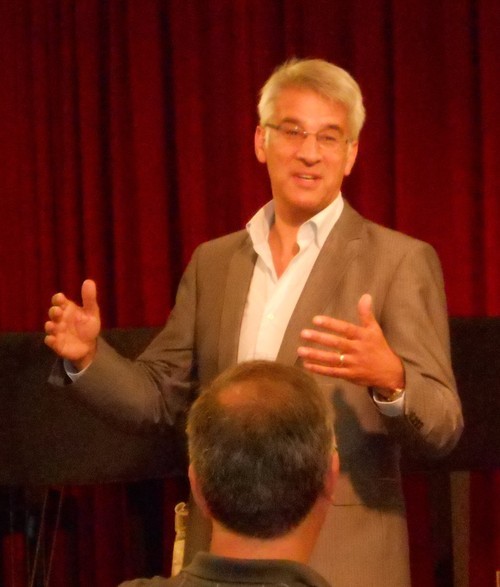
0
false
false
false
EN-US
X-NONE
X-NONE
New Knowledge
During the Advance, we were inundated with information. For better or for worse, my first significant grappling was with the Turabian writing style.[1] For the past twenty-five years I have written according to APA writing style, and Turabian is a significant change. I will continue to wrestle with the details of Turabian.
Throughout the Advance we were provided great information through the Leadership Conference and research presentations from cohort three and the faculty advisors. In terms of these, I learned most from the presentations by faculty advisors Krish Kandiah, Peter Aschof and Patrick Murunga. Krish also spoke at the Leadership Conference. I found both of his presentations deeply rooted in biblical theology, and balanced in humility and personhood. Peter introduced me to Walter Wink’s approach to theology. I ordered Wink’s The Powers that Be[2] while he was speaking and it was waiting for me when I got home. Perhaps most powerful was Patrick Murunga’s presentation on the crisis of the church during Kenya’s election crisis in 2007. I had not heard about this piece of recent history at all. Further, I was impressed by the church’s decision (post election violence) to come together and apologize to Kenyans for its failure to act as the church. The potential of the church is great. As Steve Chalke said, “The church is the most powerful agent for community transformation on the planet.”[3] The situation in Kenya demonstrates that the church can both cause and heal harm.
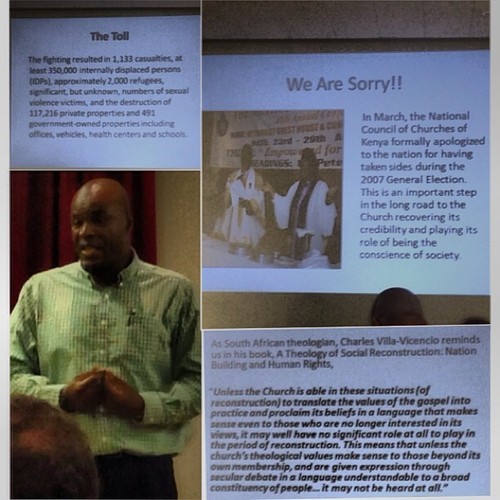
/* Style Definitions */
table.MsoNormalTable
{mso-style-name:”Table Normal”;
mso-tstyle-rowband-size:0;
mso-tstyle-colband-size:0;
mso-style-noshow:yes;
mso-style-priority:99;
mso-style-parent:””;
mso-padding-alt:0in 5.4pt 0in 5.4pt;
mso-para-margin:0in;
mso-para-margin-bottom:.0001pt;
mso-pagination:widow-orphan;
font-size:11.0pt;
font-family:”Calibri”,”sans-serif”;
mso-ascii-font-family:Calibri;
mso-ascii-theme-font:minor-latin;
mso-hansi-font-family:Calibri;
mso-hansi-theme-font:minor-latin;}
Practice:
I have had the opportunity to apply several concepts from the London Advance and our readings in my work and ministry. I started the Advance with a different idea about how to approach Visual Ethnography. We had read Pink’s book[1] prior to the Advance and I decided to represent the difference between British and American language and culture through photos of signs. During the Advance I learned that we would use this methodology in a different manner for our formal projects, but I applied it in multiple forms in my teaching. I created a Power Point for my class on Psychosocial and Spiritual Care which I presented my first day back (see Appendix). It provided my students with a visual story about differences in language, tone, and culture. I also incorporated the use of Visual Ethnography as a tool to complete community assessments in the course I teach on Social Work Practice with Communities and Organizations.
One of the topics addressed by Steve Chalke was the leadership skill of leveraging. Chalke defined the concept of earned credit in terms of relationships with others, and then discussed knowing when to cash in on this earned credit wisely, also known as leveraging. I am a low ranking Assistant Professor at Concordia University. I am involved in Concordia’s Student Leadership Immersion Program (SLIP), which was initially the focus of my doctoral work. In September 2013, we implemented an executive committee responsible for developing and directing SLIP. However, the SLIP executive committee had no authority to create or implement policies. This has slowed our progress significantly. I suggested that we convene a meeting with Concordia’s executive leadership to identify an executive champion for SLIP and ask the executive team to extend authority to the SLIP executive committee. I could have convened the meeting myself, as my doctoral work was attached to SLIP’s progress. Doing so could have undermined my relationship with the committee chair. I instead asked the committee chair to convene the meeting. He delayed this action, but recognized it as a necessity this past week. In waiting, I maintained relationship with my colleague, but gained credibility both with he and the executive team, with whom we will meet in early January 2014.
Application
I have incorporated two key concepts from our reading into my overall work and ministry. Our first reading assignment addressed critical thinking skills. Elder and Paul wrote, “Everyone thinks; it is our nature to do so. But much of our thinking, left to itself, is biased, distorted, partial, uninformed or down-right prejudiced.”[2] My students struggle to recognize biases in their thinking. It is one of our department goals to increase critical thinking skills. I have incorporated concepts of critical thinking into my teaching practice, and challenged students to apply these in their class dialogue and written work.
We have completed three readings on theology since our return from London. These have impacted how I teach and engage the members of my church. I am on my church’s leadership team. We do not have a pastor, and have embraced a shared leadership model. I teach or lead worship two to three times each month. While many of my cohort peers seemed to embrace the more academic readings, I was drawn to the simpler, more practical writing by Grenz and Olson.[3] The authors repeatedly note that theology is intended to move from the head to the heart to the hands. It is active, or it is without meaning. They also approach it from the perspective that the Christian should be engaged in theology as part of their spiritual growth. I have shared concepts from the book, as well as our other readings, in my teaching at church. My goal is to equip believers to ask critical questions, examine bias, and be able to handle the Word of God in a manner appropriate to our calling. Last week at church we collectively drew a theology of the church as community. Artists we are not, but each member was able to support their contribution with appropriately applied Scripture.
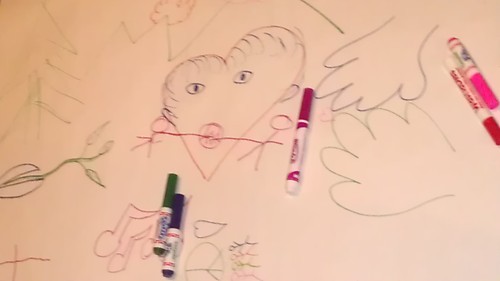
0
false
false
false
EN-US
X-NONE
X-NONE
Synthesis and Methodology
“Images are ‘everywhere’. They permeate our academic work, everyday lives, conversations, our imagination and our dreams.”[1]
Sarah Pink’s approach to Visual Ethnography suggests that images help to create or identify knowledge about a group of people or culture. Throughout this reflection I have incorporated photos primarily taken during the Advance in London. In doing so I have attempted to convey more than visual images about our experience, but to create a sense of connection and awareness regarding our experience and development. I chose to focus on Pink’s work to synthesize my learning over the past three months as well. Pink argues that the ethnographer is by nature biased as he or she is human. She defines ethnography as, “ the process of creating and representing knowledge (about society, culture and individuals) that is based on ethnographers’ own experience.”[2] In ethnography the researcher utilizes all the senses and images, as the culture defines them, to create this knowledge. She goes on to explain how sensory ethnography must consider place, location, social norms, perceptions, and other factors, to ascertain the meaning of experience.
Over the past three months, we have considered various ideas about society, theology, and leadership. One of the tasks of leadership is to tell the story of the people, organization, or mission of the group.[3] If we as leaders intend to effect change in our work and ministry, we must be able to tell the story of our work in a manner which has meaning to the people we hope to influence. When I created the Power Point titled “English Language Lessons” (Appendix), I knew that my audience had a similar cultural background as I. The images needed little explanation because they evoked a response in the audience based on our common understanding of our society. Our mutual understanding of language and symbols created meaning. Similarly, as leaders we must learn to use our various resources to tell our stories to create meaning and motivate action.
Appendix
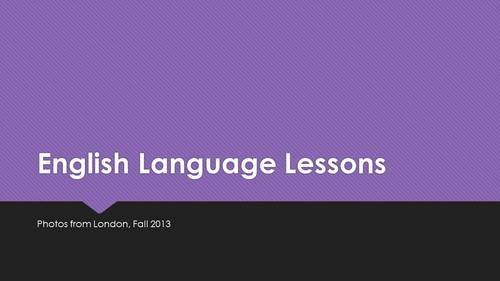
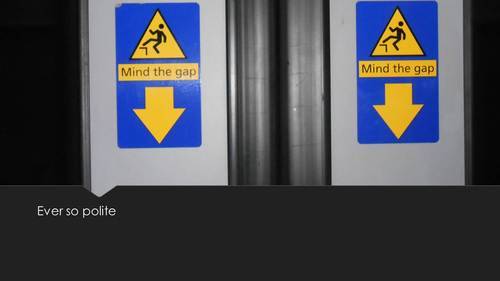
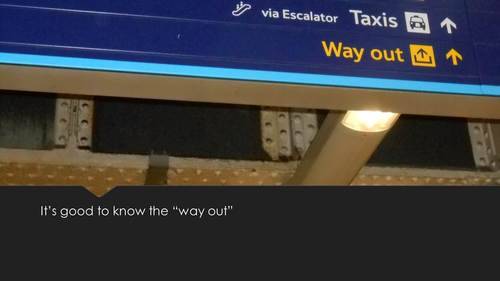
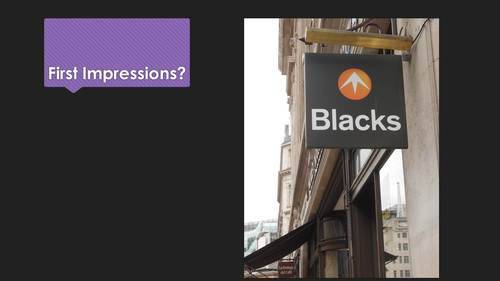
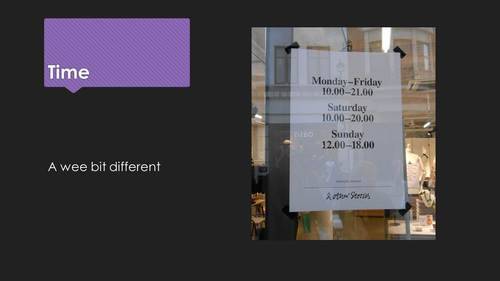
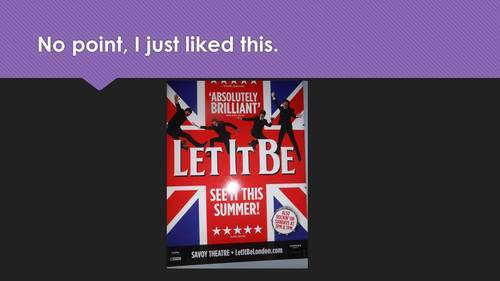
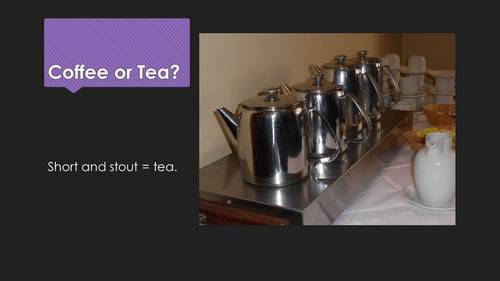
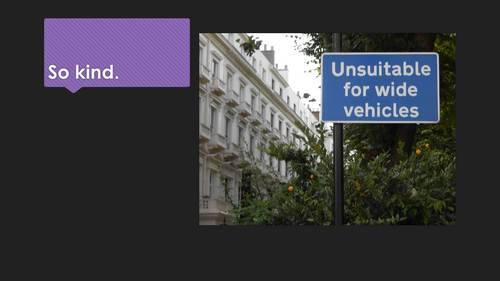
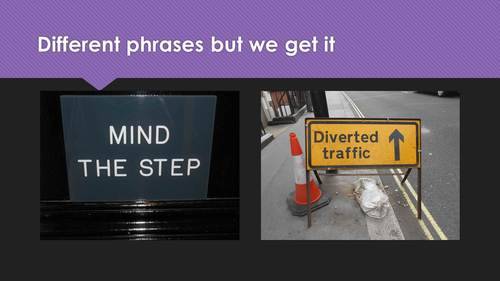
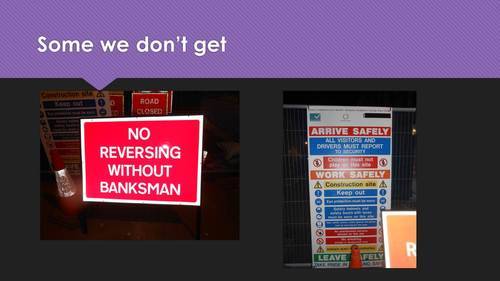
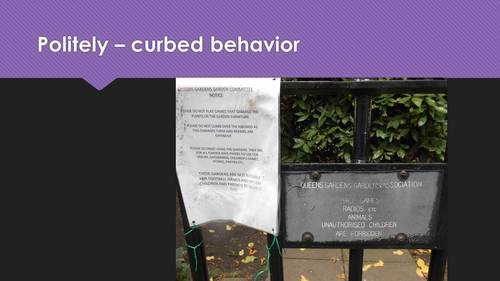
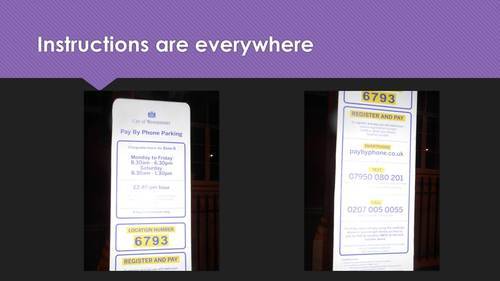
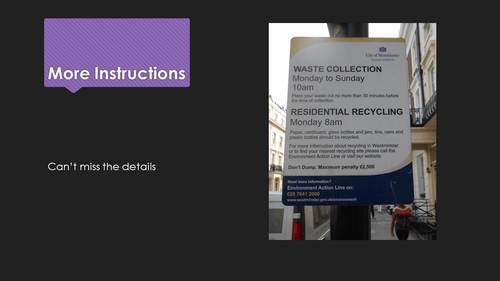
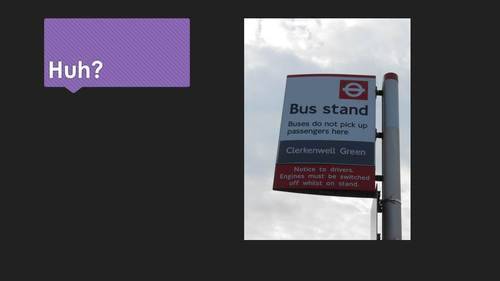


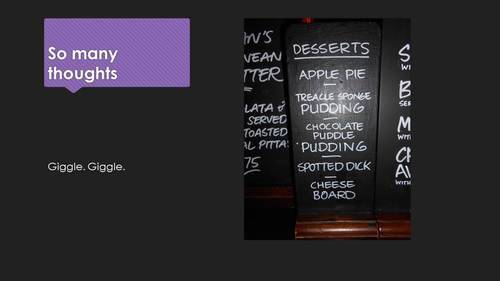
[1] Pink, p. 21.
[2] Sarah Pink, Doing Sensory Ethnography, (Los Angeles: Sage, 2009) p 8.
[3] Marshall Ganz, “Leading Change,” In Handbook of Leadership Theory and Practice, edited by Nitim Nohria and Rakesh Khurana, (Boston: Harvard Business Press, 2009) 533-545.
/* Style Definitions */
table.MsoNormalTable
{mso-style-name:”Table Normal”;
mso-tstyle-rowband-size:0;
mso-tstyle-colband-size:0;
mso-style-noshow:yes;
mso-style-priority:99;
mso-style-parent:””;
mso-padding-alt:0in 5.4pt 0in 5.4pt;
mso-para-margin:0in;
mso-para-margin-bottom:.0001pt;
mso-pagination:widow-orphan;
font-size:11.0pt;
font-family:”Calibri”,”sans-serif”;
mso-ascii-font-family:Calibri;
mso-ascii-theme-font:minor-latin;
mso-hansi-font-family:Calibri;
mso-hansi-theme-font:minor-latin;}
[1] Sarah Pink, Doing Visual Ethnography, Second ed., (Los Angeles: Sage, 2007).
[2] Richard Paul and Linda, Critical Thinking Concepts and Tool, (Tomales, CA: Foundation for Critical Thinking Press, 2009) 2.
[3] Stanley J. Grenz and Roger E. Olson, Who Needs Theology? (Downers Grove, Il: IVP Academic, 1996).
[1] Kate L. Turabian, A Manual for Writers of Research Papers, Theses, and Dissertations, Eighth Ed. revised Wayne C. Booth, Gregory G. Colomb, Joseph M. Williams, and the University of Chicago Press Editorial Staff (Chicago: The University of Chicago Press, 2013).
[2] Walter Wink, The Powers that Be: Theology for a New Millenium, (New York: Galilee, 1998).
[3] Steve Chalke, “Lecture” (presented at the 2013 London Advance of the George Fox University DMin Leadership and Global Perspectives Program, London, September 30, 2013).
/* Style Definitions */
table.MsoNormalTable
{mso-style-name:”Table Normal”;
mso-tstyle-rowband-size:0;
mso-tstyle-colband-size:0;
mso-style-noshow:yes;
mso-style-priority:99;
mso-style-parent:””;
mso-padding-alt:0in 5.4pt 0in 5.4pt;
mso-para-margin:0in;
mso-para-margin-bottom:.0001pt;
mso-pagination:widow-orphan;
font-size:11.0pt;
font-family:”Calibri”,”sans-serif”;
mso-ascii-font-family:Calibri;
mso-ascii-theme-font:minor-latin;
mso-hansi-font-family:Calibri;
mso-hansi-theme-font:minor-latin;}
/* Style Definitions */
table.MsoNormalTable
{mso-style-name:”Table Normal”;
mso-tstyle-rowband-size:0;
mso-tstyle-colband-size:0;
mso-style-noshow:yes;
mso-style-priority:99;
mso-style-parent:””;
mso-padding-alt:0in 5.4pt 0in 5.4pt;
mso-para-margin:0in;
mso-para-margin-bottom:.0001pt;
mso-pagination:widow-orphan;
font-size:11.0pt;
font-family:”Calibri”,”sans-serif”;
mso-ascii-font-family:Calibri;
mso-ascii-theme-font:minor-latin;
mso-hansi-font-family:Calibri;
mso-hansi-theme-font:minor-latin;}
[1] “Plain English,” Wikipedia, last modified September 22, 2013, accessed December 15, 2013, http://en.wikipedia.org/wiki/Plain_English.
[2] Julie A. Dodge, “Photos of London”, 2013. Photos in this document are incorporated to provide visual data related to the text.
Leave a Reply
You must be logged in to post a comment.